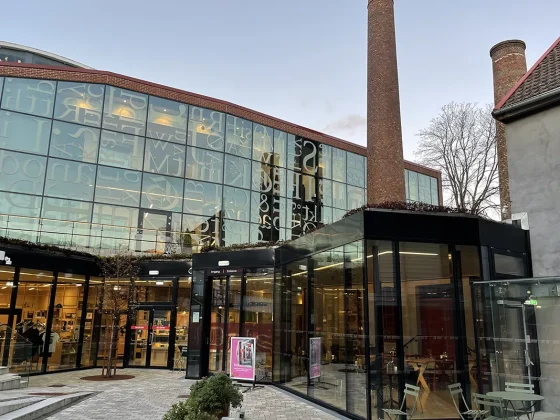Nearest Hop-On
when presenting a valid Hop on ticket.

Photo: Anne Lise Norheim/MUST
Visit the royal recidence Ledaal, a small, but beautiful mansion dated from 1803. Visit also the neighbouring ship-owner’s residence Breidablikk for insight into the beautiful 19th century interior décor and architecture as a whole. Take the short stroll to Holmeegenes and step into the “time capsule” of urban history, architectural history, garden history in a building with particular cultural and historical value, with a large collection of artifacts from the 20th century. Café and restroom-facilities at Holmeegenes.
Ledaal was built as a summer residence for the Kielland family in 1799 – 1803. The builder was the merchant and court agent Gabriel Schanche Kielland. It is now a heritage-listed site. The main building gives good insight into the lifestyle and taste of Stavanger’s upper class in the first half of the 1800s. The interior is richly furnished in the Rococo, Louis XVI, Empire and Biedermeier styles.
At Ledaal, you can learn about local history and the history of art, architecture and interior décor. In addition to being a museum, Ledaal today functions as a royal residence and venue for official municipal functions.

Photo: Oddbjørn Erland Aarstad / MUST
The villa Breidablikk was built in 1881 by Lars Berentsen, a leading merchant and ship owner in Stavanger. It was designed in the Swiss style with touches of Gothic and Romantic influence.
At Breidablikk you can delve into local history and the history of art, architecture and interior décor. The villa draws you into the story of the Berentsen family and gives intimate glimpses of the life of Stavanger’s upper class in the latter half of the 1800s.

Photo: MUST
Holmeegenes in Stavanger was built as a pleasure resort in the 1860s, with a combined residential and commercial building based on Danish models, and from the 1890s the property was run as a horticulture. The property and buildings were protected by the National Antiquities Authority in the autumn of 2005.
Holmeegenes represents frozen urban history, architectural history, garden history and political history. In addition to the buildings themselves, the inventory is of particular cultural and historical value, with a large collection of objects from the period of World War I to the 1950s.



